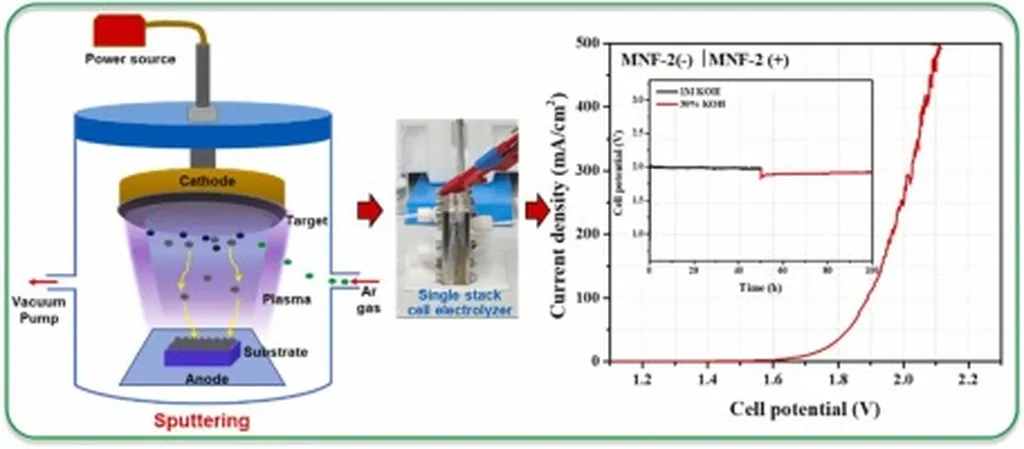In the quest for cleaner energy solutions, scientists are constantly exploring innovative materials and processes. A recent study published in the journal *Applied Surface Science Advances* (which translates to *Advances in Applied Surface Science*) offers a promising breakthrough in the field of water splitting, a crucial process for producing hydrogen fuel. The research, led by Stefan Andrei Irimiciuc from the Department of Analyses of Functional Materials at the Institute of Physics of the Czech Academy of Sciences and the National Institute for Laser, Plasma and Radiation Physics in Romania, focuses on tailoring the properties of titanium oxynitride (TiON) thin films through pulsed laser deposition (PLD).
Water splitting, the process of breaking water molecules into hydrogen and oxygen, is a key reaction in the development of renewable energy technologies. The hydrogen evolution reaction (HER) and the oxygen evolution reaction (OER) are at the heart of this process. Irimiciuc and his team have discovered that by carefully controlling the gas-phase oxidation reactions during the PLD of TiN films, they can enhance the efficiency of these reactions.
The researchers found that the optimal nitrogen occupation in the films occurs at an oxygen pressure of 0.1 Pa, which corresponds to the highest deposition energies during film growth. “This optimization is crucial for improving the performance of the films in water splitting applications,” Irimiciuc explains. The study also revealed that increasing the deposition temperature up to a certain point allows for better incorporation of nitrogen, further enhancing the films’ properties.
One of the most significant aspects of this research is the use of advanced plasma diagnostics, including angle- and time-resolved Langmuir probe measurements combined with optical emission spectroscopy. These techniques provide a deeper understanding of the oxidation dynamics during the PLD process, offering valuable insights for tailoring the properties of oxynitride thin films.
The implications of this research for the energy sector are substantial. By improving the efficiency of HER and OER reactions, the study paves the way for more effective and cost-efficient water splitting technologies. This, in turn, could accelerate the adoption of hydrogen as a clean and sustainable energy source.
Irimiciuc’s work not only advances our understanding of the oxidation dynamics in PLD but also highlights the potential of rare-metal-free materials in renewable energy applications. As the world continues to seek innovative solutions to the energy crisis, this research offers a promising avenue for exploration.
The integration of advanced diagnostics with thin-film analysis is a significant step forward in the field of materials science. It provides a deeper understanding of the processes involved in creating high-performance materials for energy applications. This research could shape future developments in the field, driving innovation and advancing the transition to a sustainable energy future.
In the words of Irimiciuc, “Our findings open up new possibilities for tailoring the properties of oxynitride thin films, which could have a profound impact on the development of clean energy technologies.” As the energy sector continues to evolve, this research offers a glimpse into the future of renewable energy solutions.

